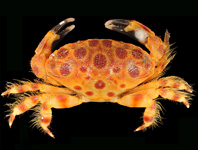Abstract
Five species of aglaopheniid hydroids (Aglaophenopsis cornuta, Cladocarpus diana, C. formosus, C. integer, and Nematocarpus ramuliferus) were collected from the Flemish Cap, Flemish Pass, and Grand Banks of Newfoundland during surveys with bottom trawls, rock dredges, and scallop gear. All are infrequently reported species, with C. diana being discovered for the first time since its original description from Iceland. We document here the southernmost collections of C. diana and N. ramuliferus, both previously unknown in the western Atlantic. Each of the five species is described and illustrated based on fertile material, a key is provided for their identification, and bathymetric distributions are noted. Known depth ranges are extended for A. cornuta, C. diana, and C. integer. Aglaophenopsis and Nematocarpus are recognized as genera distinct from the polyphyletic Cladocarpus, based on the unique structure of the phylactocarp in the former, and the existence of appendages with nematothecae (ramuli) on almost all thecate internodes of hydrocladia in the latter. These appendages occur even in the absence of gonothecae, and are here considered defensive structures that protect the hydranths. In differing from typical phylactocarps, we accept the contention that they are characters of generic value.

